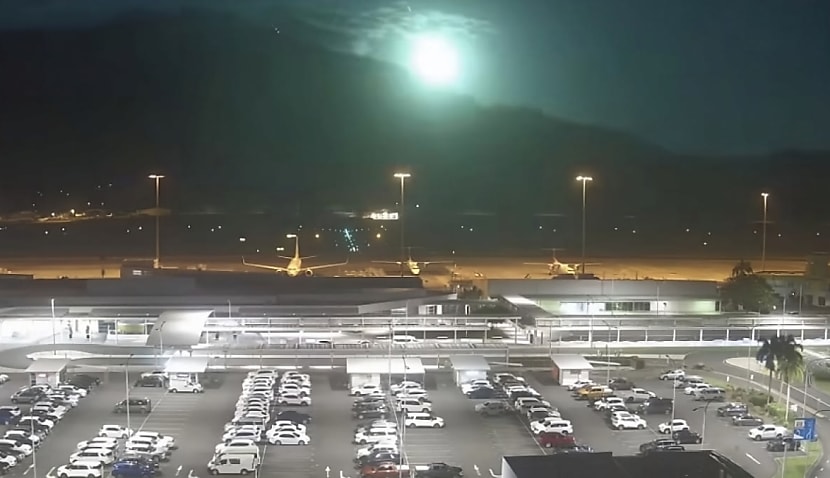Dr Ellie Sansom, who heads Curtin’s Desert Fireball project to track space rocks, made the discovery after analysing NASA data that dropped on Monday.
The meteor exploded 29 kilometres over Blackbull, a minuscule locality between the Gulf communities of Normanton and Croydon in the north-west of the state, on 20 May.
Now, new figures provided by NASA suggest the meteor was travelling at 28 kilometres per second, and the force of the blast was equivalent to exploding 7.2 kilotons of TNT.
Scientists have used the data to deduce the meteor would have had a diameter of 3.5 metres and weighed about 80,000 kilograms.
“I was checking every day, and then the data finally came through — it’s the biggest event that it has ever recorded over Australia,” Dr Sansom told the ABC.
“Anything that’s below 35 kilometres, we’re usually confident there’s stuff on the ground, and for it to get as low as 29 kilometres, there’s probably going to be quite a lot of that leftover in little pieces.
“We are going to get scientists together from here at Curtin University, probably Monash and from University of Southern Queensland, along with some keen amateurs as well.”
The Desert Fireball Network (DFN) is a network of 52 autonomous stations across Australia that are designed to track meteorites as they fall to Earth through the atmosphere.
Dr Sansom appeared on the Space Connect Podcast last year to talk through her work. You can listen at the bottom of this page or see all previous episodes on your device here.
“First established in 2005 as a trial of three remote-operated film cameras to observe meteors falling towards Earth’s surface, the DFN at Curtin University is now a nationally distributed network of over 50 disruption-tolerant and fully autonomous digital observatories that continually monitors 3 million square kilometres of the night sky — a third of Australian skies, all night, every night,” it describes itself online.
“Using intelligent imaging systems, automated data reduction pipeline, real time server-side triangulation and supercomputer data management system, the DFN captures the paths of fireballs in the sky, triangulating trajectories from multiple viewpoints, linking the rock’s pre-Earth orbit to its landing site for recover.”

Adam Thorn
Adam is a journalist who has worked for more than 40 prestigious media brands in the UK and Australia. Since 2005, his varied career has included stints as a reporter, copy editor, feature writer and editor for publications as diverse as Fleet Street newspaper The Sunday Times, fashion bible Jones, media and marketing website Mumbrella as well as lifestyle magazines such as GQ, Woman’s Weekly, Men’s Health and Loaded. He joined Momentum Media in early 2020 and currently writes for Australian Aviation and World of Aviation.

